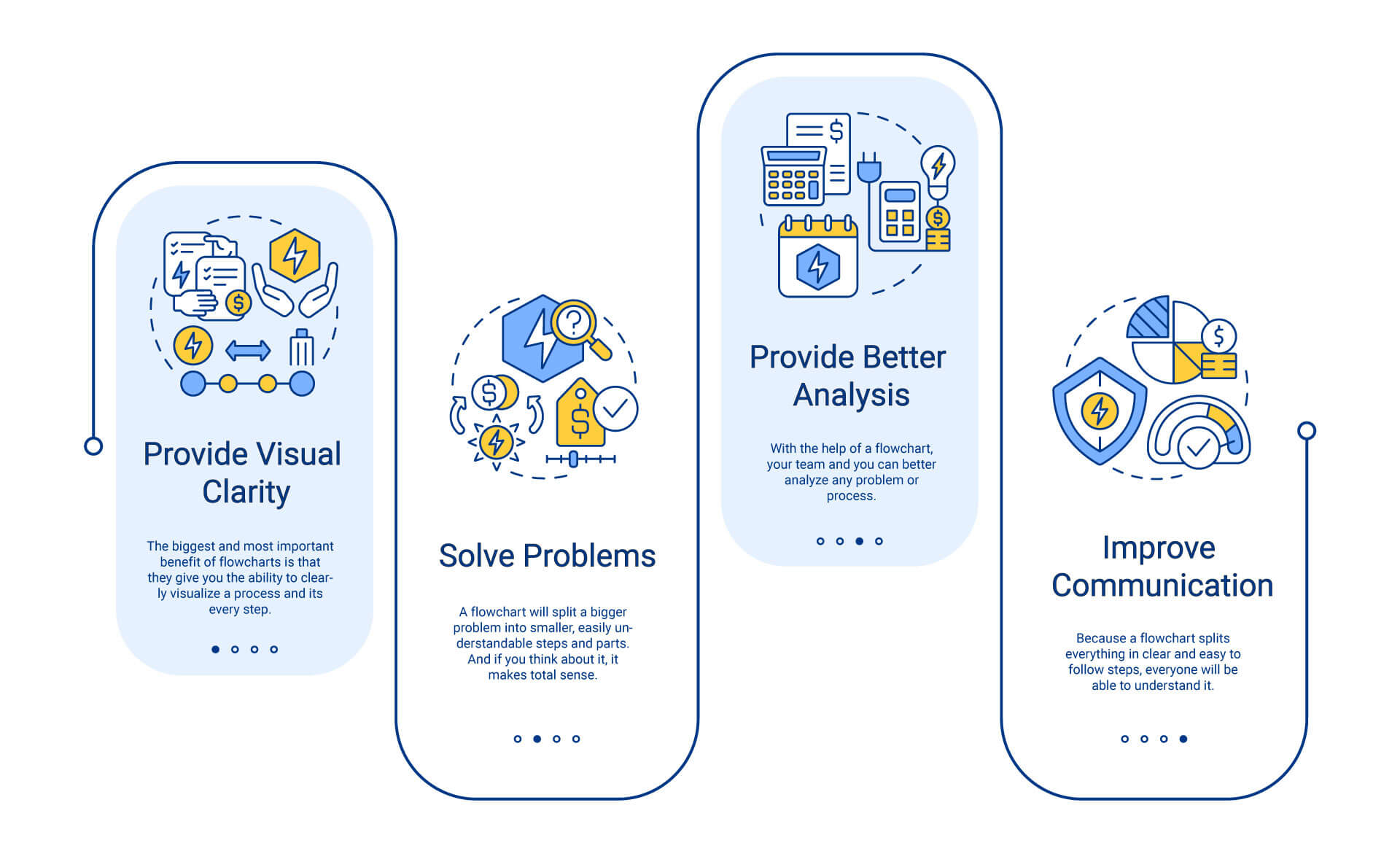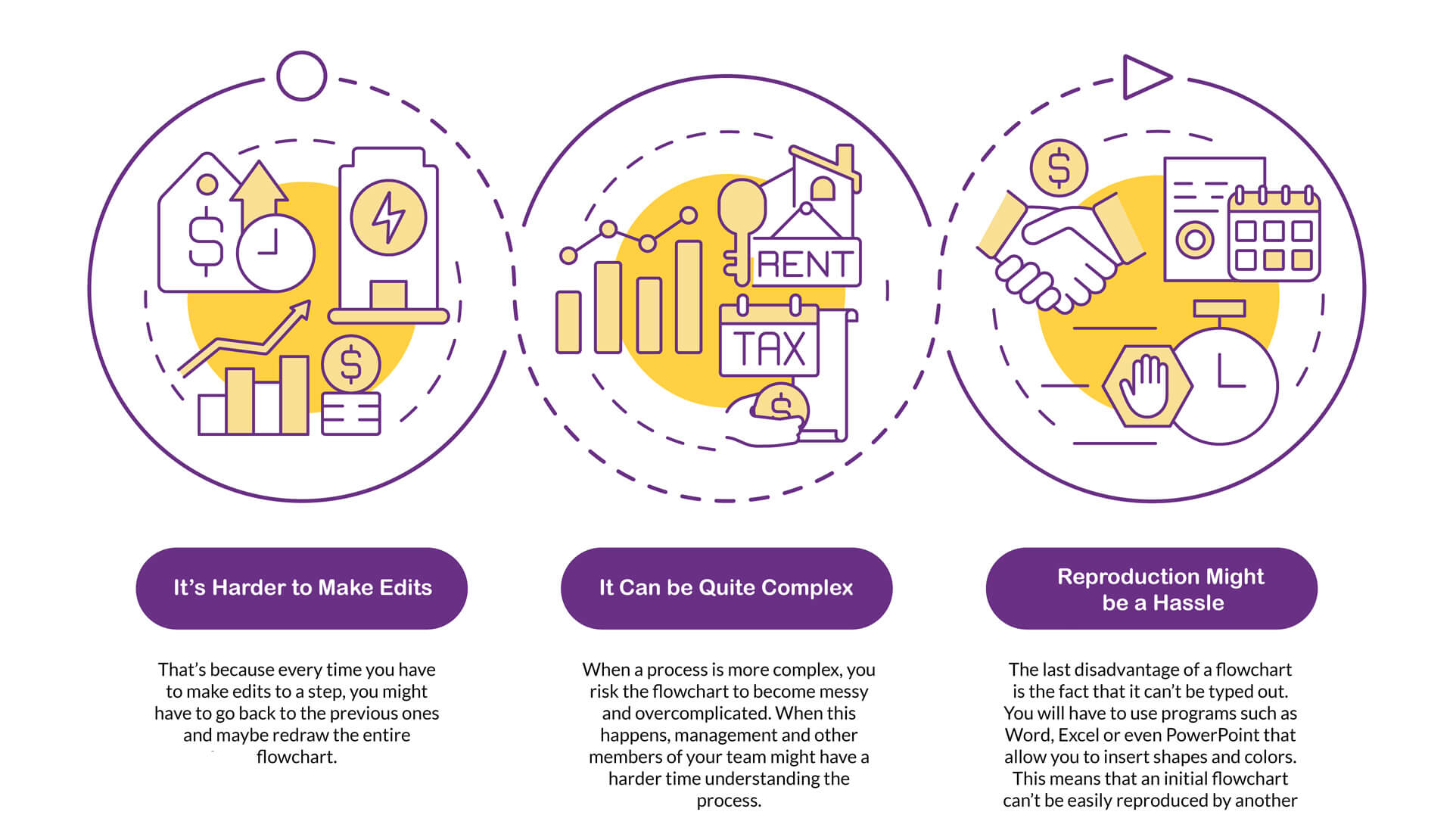Whether you have a business or work as a freelancer, you will sometimes need more clarity in your processes. Graphs and charts are great tools for that. Especially because there are so many of them, adapted to different processes and workflows. One of them is a flowchart and it comes with various advantages and disadvantages. In this article, we’ll take a better look at them!
What Is a Flowchart?
A flowchart is a diagram that represents the sequence of steps that are needed to reach a solution to a problem. You can look at it as the visual representation of a flow – workflow, business flow, you name it. However, not all processes can be represented as a flowchart, unless they involve some exact routines.

You can make a flowchart for various steps and processes such as:
- Documenting a process;
- Planning a project;
- Communicating the steps of a process to others;
- Studying a certain process.
Also read: Top 10 Tools For Project Planning And Management For Freelancers
Advantages of Flowcharts

A flowchart has many advantages. The great thing about this type of graph is that it can be used in many different industries and by various people. Flowcharts are useful tools for project managers, teachers, and freelancers alike. That being said, let’s check out some of the advantages of a flowchart.
1. They Provide Visual Clarity
The biggest and most important benefit of flowcharts is that they give you the ability to clearly visualize a process and it’s every step. No matter how complicated it might be, a flowchart will help you and your team clearly see every step. With a flowchart, you can lay out a complex idea or algorithm on a single page.
That way, both you along with stakeholders and your team will easily understand the necessary steps to solve a problem or finish a project. You will also be able to clearly see if there are some unnecessary steps or processes that can be improved.
2. They Help You Solve Problems
A flowchart will split a bigger problem into smaller, easily understandable steps and parts. And if you think about it, it makes total sense. When you take a seemingly complex issue and split it into smaller parts, you’re able to deal with each of those components separately.
On top of that, when you have everything clearly laid out, you eliminate the chance of leaving out necessary steps or elements. That way, you avoid wasting extra time or money going back to that step to fix it.
3. They Help with Documentation
A flowchart is the best type of documentation you can give your team. That’s because everyone is able to understand this graph, as it displays everything in clear and easy-to-follow steps. It can be used in various departments such as marketing or software development.
On top of that, flowchart documentation is easy to send to every person involved. It’s usually a small document that you can email to your department. It helps you avoid endless blocks of text and even paper waste.
4. They Provide Better Analysis
With the help of a flowchart, your team and you can better analyze any problem or process. That’s because it clearly shows every step involved so you can make better decisions on how to deal with them.
You can also use the various shapes to better define every step of the process. For example, you can have a circle defining the start and end of the process, with squares pinpointing the moment when action is required.
5. They Improve Communication
Not every member of your team will fully grasp the concepts of a process. That’s fine, as long as they’re not involved in each step. However, you still want everyone to understand the process so everything runs smoother.
Because a flowchart splits everything into clear and easy-to-follow steps, everyone will be able to understand it. And if you use specific software to create it, people on your team can also contribute and leave comments and questions.
Disadvantages of Flowcharts
As it’s the case with any tool you might use, flowcharts also come with some disadvantages. While they’re not that bad, you should still be aware of them before you start using flowcharts. Let’s check them out!
1. It’s Harder to Make Edits
Making alterations or edits to a flowchart might prove to be quite the hassle. That’s because every time you have to make edits to a step, you might have to go back to the previous ones and maybe redraw the entire flowchart.
When you do that, you risk wasting precious resources, both time and money. This is one of the main disadvantages of a flowchart.
Also read: How to Adapt Your Design Solutions to the Right Context
2. They Can be Quite Complex
When a process is more complex, you risk the flowchart becoming messy and overcomplicated. When this happens, management and other members of your team might have a harder time understanding the process.
Again, this will prove to be a waste of time and resources because you will have to explain in more detail what every step means. So before you start drawing a flowchart, make sure you have a full understanding of the process and its complexity. You might find out you need another type of chart.
3. Reproduction Might be a Hassle
The last disadvantage of a flowchart is the fact that it can’t be typed out. You will have to use programs such as Word, Excel, or even PowerPoint that allow you to insert shapes and colors. This means that an initial flowchart can’t be easily reproduced by another person.
Our Final Thoughts
We hope this article helped you get a better idea about what a flowchart is and what are its main advantages and disadvantages. While this specific graph can be a powerful tool that will definitely boost your work and productivity, it can also be quite specific. Some processes can be defined with a flowchart, while others might require a more specialized type of graph.
What about you? Do you use flowcharts in your processes? What are the main pros and cons you can think about? Let us know in the comments below!











Leave a comment